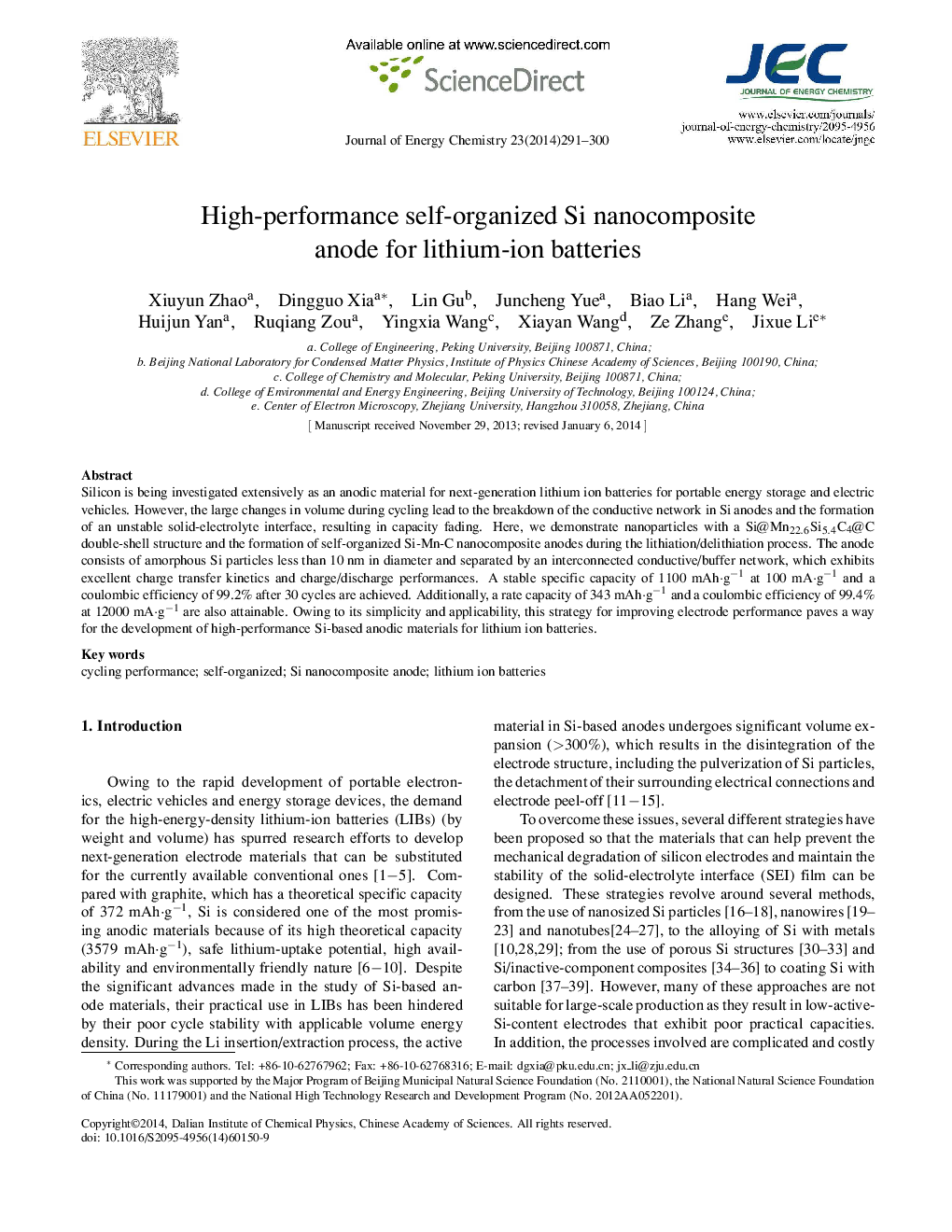| Article ID | Journal | Published Year | Pages | File Type |
|---|---|---|---|---|
| 63903 | Journal of Energy Chemistry | 2014 | 10 Pages |
Silicon is being investigated extensively as an anodic material for next-generation lithium ion batteries for portable energy storage and electric vehicles. However, the large changes in volume during cycling lead to the breakdown of the conductive network in Si anodes and the formation of an unstable solid-electrolyte interface, resulting in capacity fading. Here, we demonstrate nanoparticles with a Si@Mn22.6Si5.4C4@C double-shell structure and the formation of self-organized Si-Mn-C nanocomposite anodes during the lithiation/delithiation process. The anode consists of amorphous Si particles less than 10 nm in diameter and separated by an interconnected conductive/buffer network, which exhibits excellent charge transfer kinetics and charge/discharge performances. A stable specific capacity of 1100 mAh·g−1 at 100 mA·g−1 and a coulombic efficiency of 99.2% after 30 cycles are achieved. Additionally, a rate capacity of 343 mAh·g−1 and a coulombic efficiency of 99.4% at 12000 mA·g−1 are also attainable. Owing to its simplicity and applicability, this strategy for improving electrode performance paves a way for the development of high-performance Si-based anodic materials for lithium ion batteries.
A Si@Mn22.6Si5.4C4@C composite with a double-shelled structure is developed and used to form a self-organized nanocomposite Si anode in lithium ion batteries, exhibiting much improved cycling performance and excellent rate capability.Figure optionsDownload full-size imageDownload as PowerPoint slide
